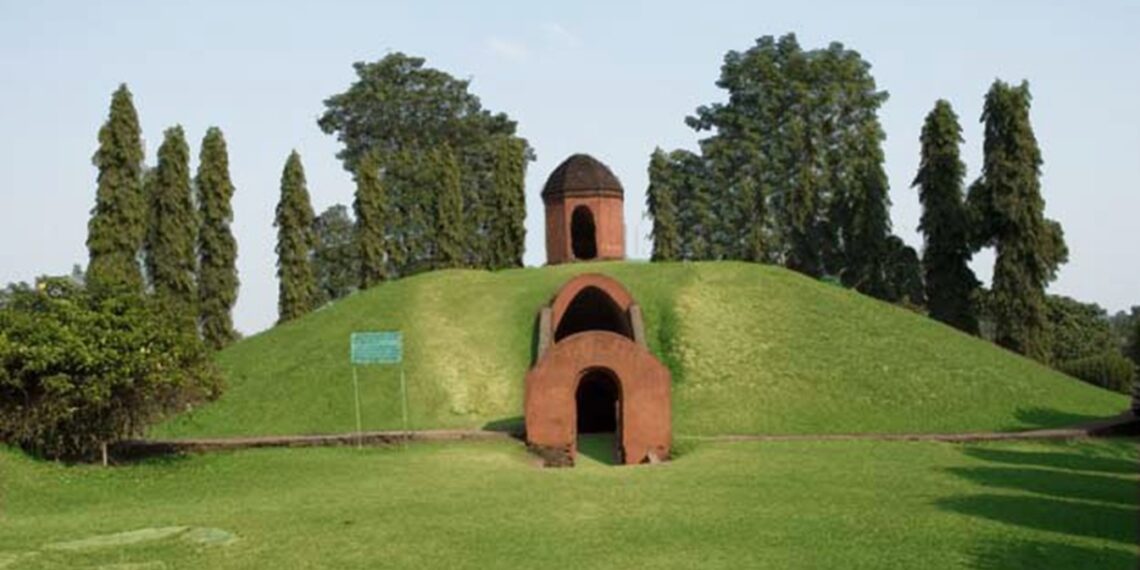Awaiting a green light from UNESCO, the Charaideo maidams, known as the Pyramids of Assam, are on the cusp of joining the prestigious list of World Heritage Sites.
The centuries-old royal burial sites of the Ahom dynasty in Assam’s Charaideo district have been under consideration since 2023, when they were nominated among 52 other sites in India for UNESCO Heritage status.
In March of the same year, the maidams, home to over 90 royal burial mounds, fulfilled all the technical requirements set by the UNESCO Secretariat.
Chief Minister Himanta Biswa Sarma shared the achievement on a micro-blogging website, expressing great pride in the landmark moment for Assam.
The journey towards UNESCO recognition progressed further in October 2023 when UNESCO International Council on Monuments and Sites (ICOMOS) expert Lim Chen Sian conducted a detailed three-day inspection of the site.
Now, as Charaideo stands at the threshold of international acclaim, here is look at the rich history and significance of these century-old burial sites
Unlocking the Mystery of Maidams
Maidams, a unique manifestation of Ahom burial practices, are tumuli or mounds raised over the graves of Ahom royalty and aristocracy.
Charaideo stands out as the exclusive repository of these maidams, with additional scattered sites found across Eastern Assam between Jorhat and Dibrugarh.
A typical Charaideo maidam features one or more chambers within a vault, topped by a hemispherical earthen mound covered in grass.
A distinctive pavilion, known as the chow chali, crowns the mound, enclosed by a low octagonal wall with a single entrance.
Inside these chambers lie the remnants of the Ahom royals, accompanied by belongings deemed essential for the afterlife.
The burial rites, reminiscent of ancient Egyptian practices, have earned Charaideo maidams the moniker of the “Pyramids of Assam.”
Charaideo’s historical significance
The name Charaideo finds its roots in Tai Ahom, comprising “Che” for city or town, “Rai” for shine, and “Doi” for hill. Translated, Charaideo means “a shining town situated on a hilltop”.
Established in 1253 AD by King Sukaphaa, Charaideo served as the first capital city of the Ahoms.
Despite the dynasty’s multiple capital shifts over six centuries, Charaideo retained symbolic and ritualistic importance, tracing back to its founding by King Sukaphaa.
After Sukaphaa’s interment in 1856, successive Ahom royals chose Charaideo as their final resting place.
Today, these maidams draw tourists seeking a glimpse into Assam’s rich history.
While the region boasts over 150 maidams, only 30 enjoy protection under the Archaeological Survey of India, with many facing neglect.
The Charaideo Maidams’ dossier notes the prevalence of such burial sites across East and Southeast Asia.
However, it highlights Charaideo’s distinction in scale, concentration, and sacred Tai-Ahom land, setting it apart as a cultural treasure waiting for global acknowledgment.
As the UNESCO decision looms, Charaideo’s ancient heritage stands poised on the brink of international acclaim, awaiting its well-deserved place among the world’s most esteemed cultural sites.















